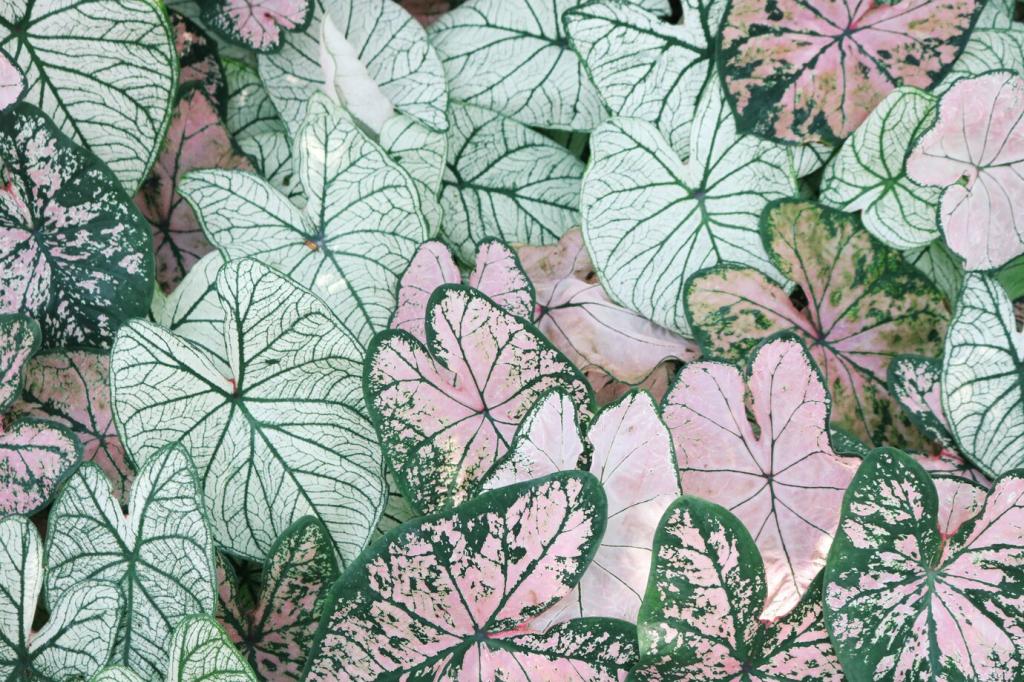Incorporating nature into modern interior design is more than a fleeting trend—it’s a holistic approach to enhancing living spaces by fostering a connection between people and the natural world. Biophilic design embraces the innate human affinity for nature, creating interiors that nurture well-being, creativity, and tranquility. This guide explores how to seamlessly weave biophilic elements into the fabric of contemporary homes, introducing natural materials, patterns, and remedies to the often sterile look of modern interiors. Through carefully chosen design strategies, one can cultivate spaces that not only look stunning but also support mental and physical health.
Understanding Biophilic Design
The Science Behind Biophilia
Biophilia, the love of nature, is rooted in evolutionary psychology and physiological studies that demonstrate humanity’s need for natural stimuli. When natural elements are incorporated into our environment, studies show increased productivity, reduced anxiety, and improved focus. Modern interior design, with its often minimalistic and sterile appearance, can inadvertently induce stress and fatigue. Integrating biophilic elements, therefore, not only improves visual appeal but also plays a pivotal role in maintaining cognitive health and well-being. Understanding this scientific foundation encourages more purposeful, human-centered spaces.
Key Principles of Biophilic Interiors
Biophilic design is governed by several key principles that ensure its effectiveness. These include visual connections with nature, such as view corridors to the outdoors, and the use of natural light. Materiality is also important—organic textures, patterns, and color palettes inspired by landscapes create subtle yet powerful impressions of the natural world. Sensory engagement, through tactile surfaces and even natural scents, plays a significant role in forging a multisensory connection. By adhering to these principles, designers and homeowners can sculpt interiors that serve both functional and emotional needs.
Biophilia in Contemporary Contexts
Modern architecture often emphasizes clean lines, efficiency, and open layouts, but can sometimes feel cold or impersonal. Integrating biophilia within contemporary contexts means using available technological and material innovations to achieve harmony between nature and modernity. This could mean living walls in urban apartments, reclaimed wood finishes within minimalist spaces, or innovative daylight solutions. Today’s designers are finding new ways to blend sustainability with style, pushing boundaries to create rooms that foster relaxation, connection, and vitality amid the demands of urban living.
Bringing the Outdoors In
Maximizing Natural Light
Allowing sunlight to cascade into interiors is one of the simplest yet most transformative ways to integrate nature into design. Thoughtful placement of windows, doors, and skylights enables spaces to breathe and glow with vitality. Modern window treatments and strategic furniture layouts further enhance the play of light, turning rooms into dynamic, ever-changing environments. Additionally, natural light is proven to uplift mood and regulate circadian rhythms, making it vital for well-being. Spaces saturated with sunlight foster a sense of openness and freedom, echoing the world outside.
Living Greenery as a Design Feature
Plants are more than ornaments; they are living, breathing entities that infuse energy and life into interiors. From statement potted trees to delicate hanging planters, greenery can define focal points and soften architectural edges. Improved indoor air quality, enhanced humidity, and the calming effect of verdant hues are just some of the tangible benefits. By thoughtfully selecting plant species for each interior’s lighting conditions and maintenance requirements, homeowners embed a touch of wilderness and tranquility in even the most urban apartments.
Seamless Indoor-Outdoor Transitions
Blurring the lines between inside and out can remarkably expand the perceived space and harmony of a home. Large sliding glass doors, open verandas, and covered patios invite the natural world inside, ensuring continual visual and sensory exchange. This seamless transition encourages residents to move fluidly between environments, enjoying both the shelter of interiors and the embrace of outdoor elements. Design strategies such as continuing flooring materials or color schemes indoors and out further unite these realms, fostering sanctuary and togetherness within nature’s embrace.
Natural Materials and Textures
Wood remains a favorite among designers seeking to evoke comfort and connection to nature. Its natural grain, tones, and tactile qualities create a sense of warmth and safety. Whether featured in sleek Scandinavian floors, exposed beams, or handcrafted furniture, wooden elements can complement any style. Sustainably sourced or reclaimed wood offers added value by supporting eco-friendly practices. The presence of wood has been shown to soothe the psyche, contributing to stress reduction and emotional balance in modern interiors.

Earthy Neutrals and Warm Tones
Earthy neutrals—think warm taupes, beiges, and soft browns—form an inviting foundation that mirrors soil, sand, and stone. These tones create a restful backdrop that complements the organic textures of natural materials, allowing bold accents or greenery to shine. Warm color palettes support a comforting ambiance, making expansive modern spaces feel intimate and approachable. Subtle variations in pigmentation add depth and movement, ensuring the environment feels dynamic rather than monotonous.
Greens and Botanical Shades
Shades of green, from soft sage to deep forest, are quintessential to biophilic design. These hues reflect the healing power of nature and have a pronounced effect on mental clarity and relaxation. Incorporating green through walls, furnishings, or decorative objects bridges the gap between indoors and the lush world outside. Such colors encourage focus and peace, aiding both productivity in workspaces and restfulness in private areas. Botanical tints also provide a timeless palette that evolves gracefully with changing trends.
Patterns, Shapes, and Form
Biomimicry involves drawing inspiration from nature’s genius—its patterns, systems, and forms—and translating them into our built environment. Utilizing motifs such as leaf veins, honeycombs, or water ripples in textiles, wallpapers, or surfaces adds an element of organic unpredictability. These visuals can calm the mind by invoking familiarity and order found in nature. Moreover, biomimetic patterns can functionally enhance interiors by directing flow or creating focal points, making the aesthetic integration of nature both functional and beautiful.

Air Quality and Indoor Environment
Introducing plants is a powerful way to purify indoor air while enriching the environment with fresh oxygen and humidity. Specific species are effective at removing toxins and balancing moisture levels, crucial for comfortable living in climate-controlled modern homes. Additionally, natural ventilation strategies—such as operable windows and cross-breezes—maintain healthy air flow. Healthy interiors support immune function, reduce fatigue, and foster a sense of rejuvenation, qualities essential for truly nurturing personal sanctuaries.

Stress Reduction and Mental Clarity
Biophilic design has a measurable impact on stress levels and mental clarity. The presence of greenery, daylight, and serene views has been shown to lower cortisol, the stress hormone, while boosting concentration and overall cognitive performance. Natural settings and materials promote restoration and recovery after demanding tasks. By crafting interiors that echo our evolutionary comfort zone, we foster spaces where relaxation and creativity flourish, ensuring that work and leisure activities are both productive and satisfying.

Social Connection and Community
Nature-inspired interiors can facilitate meaningful connections, not just with the environment but among people themselves. Gathering spaces designed with warmth and openness—enhanced by natural materials, pleasant lighting, and organic layouts—invite conversation and togetherness. Biophilic elements can soften boundaries, encouraging communal interaction and shared experiences. Ultimately, the restorative quality of nature-infused spaces creates a sense of belonging and comfort, nurturing communities inside even the most modern walls.

Sustainable Sourcing and Environmental Impact
Choosing materials that are ethically harvested and managed is paramount for eco-friendly design. Certifications such as FSC for wood and organic labels for textiles ensure that production supports responsible practices rather than depletion. Beyond environmental benefits, ethically sourced materials often exhibit higher quality and longer durability. Transparent supply chains allow homeowners and designers to make informed choices, connecting the story of each material back to the living systems from which they came.
